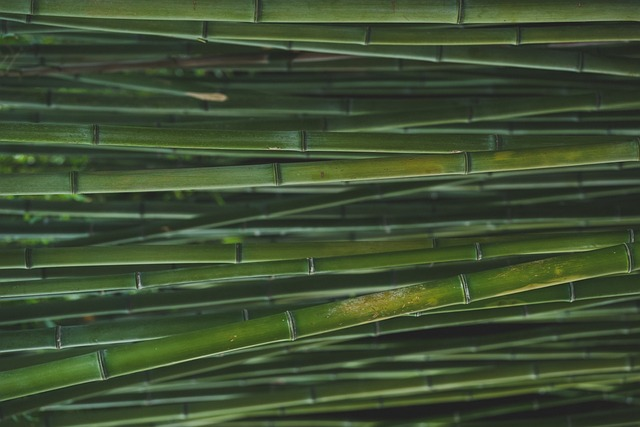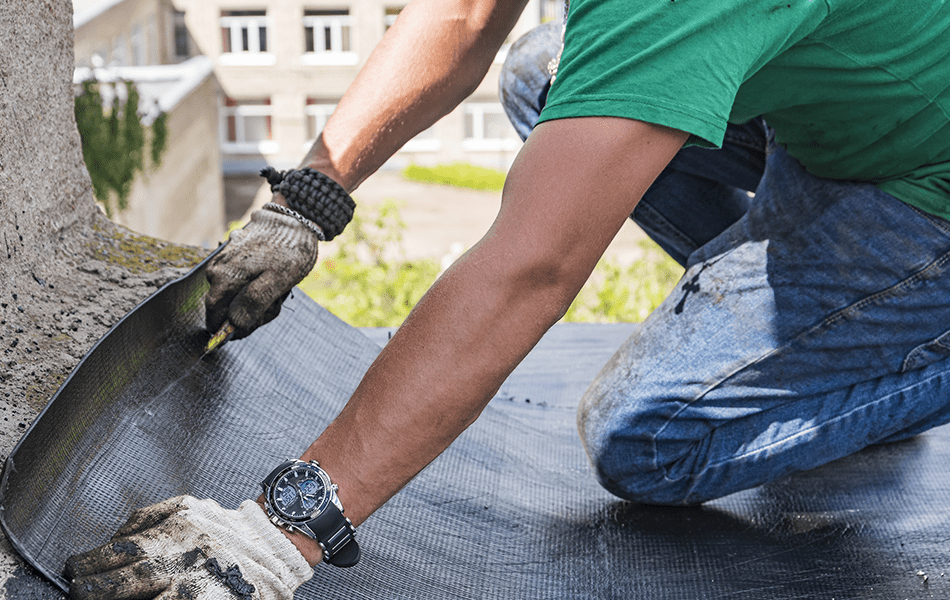By embracing sustainable insulation materials in the Philippines, such as coir, bamboo, and rattan, the construction industry can reduce its ecological footprint while improving indoor comfort, fire safety regulations and energy efficiency. Investing in research and development, as well as promoting the use of these sustainable materials, can lead to greener and more sustainable homes across the country.
What are Your Best Options for Green Home Insulation?
There are several excellent options available that prioritize energy efficiency and environmental sustainability. One of the best choices is the use of natural fibers such as coconut fiber (coir) and rice husks. These materials are abundant in the Philippines and can be used as effective insulation options. Coir, derived from the husks of coconuts, offers excellent thermal properties and helps regulate temperature and humidity levels within homes. Rice husks, a byproduct of the rice milling process, can also be processed into insulation materials that provide good thermal performance and sound absorption.
Another option for green home insulation in the Philippines is the use of cellulose insulation. Cellulose is made from recycled paper materials, such as newspapers and cardboard, which are treated with non-toxic fire retardants. This type of eco friendly insulation material not only provides excellent thermal performance but also promotes waste reduction by repurposing paper products that would otherwise end up in landfills.
Furthermore, exploring sustainable alternatives like natural fibers, such as bamboo and rattan, can also be considered for insulation purposes in the Philippines. These locally abundant materials are known for their strength and versatility in construction and can offer thermal insulation properties when properly processed and treated.
By considering natural fiber insulation like coir and rice husks, as well as cellulose insulation and sustainable materials like bamboo and rattan, homeowners in the Philippines can effectively insulate their homes while reducing their environmental impact. These green insulation options provide a combination of energy efficiency, waste reduction, and sustainable sourcing, making them ideal choices for creating eco-friendly living spaces in the country.
Let’s take a look at what makes eco-friendly insulation so popular with professionals to DIY tiny house builders and homeowners
One key factor of eco insulation, is its contribution to sustainability and environmental preservation. With a growing awareness of climate change and the need to reduce carbon footprints, there is a strong demand for insulation materials that minimize environmental impact. Eco-friendly insulation options offer renewable and biodegradable alternatives to traditional materials, aligning with the goal of a negative carbon footprint and creating more sustainable living spaces.
Another reason for the popularity of eco-friendly insulation is its energy efficiency. Insulation plays a critical role in maintaining comfortable indoor temperatures and reducing energy consumption for heating or cooling. Eco-friendly insulation materials, such as natural fibers like coconut fiber (coir) or rice husks, and cellulose derived from recycled paper, provide effective thermal insulation, helping to keep homes cooler during hot Philippine summers and warmer during cooler seasons.
Moreover, the rise of DIY tiny house builders in the Philippines has further fueled the demand for eco-friendly insulation. As these builders aim for sustainable and self-sufficient living spaces, they seek insulation materials that align with their values. Eco-friendly options often come in easy-to-install formats, allowing DIY enthusiasts to insulate their tiny homes efficiently and effectively.
What is the Point of Home Insulation?
The point of home insulation is to create a thermal insulation that helps regulate the temperature inside a home, ensuring optimal comfort and energy efficiency. Insulation acts as a protective layer, preventing the transfer of heat between the interior and exterior of a house. By reducing heat flow, insulation helps to keep homes cooler in hot climates and warmer in cold climates.
The primary purpose of home insulation is to improve energy efficiency. When a home is properly insulated, it minimizes the need for excessive heating or cooling, reducing the reliance on energy-consuming systems such as air conditioners or heaters.
Additionally, insulation plays a crucial role in enhancing indoor comfort. It helps maintain a consistent temperature throughout the house, eliminating drafts and cold spots. Insulation also acts as a sound barrier, reducing noise transmission from outside and between rooms within the house.
Another essential point of home insulation is moisture control. Proper insulation helps absorb moisture, prevent condensation, which can lead to mold and mildew growth, and protects the structural integrity of the building. Insulation materials with moisture-resistant properties can further mitigate the risk of corrosion and moisture damage-related issues, improving indoor air quality and overall home durability.
Insulation and R-value
The R-value is a measure of the thermal resistance of an insulation material. It indicates by how much insulation and effectively the insulation can resist the transfer of heat. The higher the R-value, the better the insulation’s ability to prevent heat flow insulating material.
In the Philippines, where the climate is predominantly tropical, insulation with a focus on heat reduction is crucial. Adequate insulation can help keep homes cooler by minimizing heat gain from the external environment. This is particularly important in regions with high temperatures and humidity levels throughout the year.
The appropriate R-value for insulation in the Philippines depends on factors such as the local climate, building design, and energy efficiency goals. Generally, insulation with higher R-values is recommended for roof insulation and ceilings, as they are the areas most exposed to direct sunlight and heat. Insulating walls, floors, and windows also contribute to overall energy efficiency.
Common insulation materials used in the Philippines include: fiberglass insulation, expanded polystyrene (EPS), and natural fibers like coconut fiber compressed wool fibers (coir). These materials have varying R-values, and their suitability depends on the specific insulation requirements and budget considerations.
To ensure effective insulation and optimal energy efficiency, it is essential to choose insulation materials with appropriate R-values for the specific climate and building conditions. Consulting with professionals or experts in the field can help determine the ideal R-value for different areas of the home and select the most suitable insulation materials.
Which Eco-Friendly Home Insulation Options Are Available?
Several eco friendly alternatives and-friendly home insulation options are available in the Philippines, offering sustainable and energy-efficient alternatives to traditional insulation materials. These eco friendly insulation alternatives options prioritize environmental preservation, promote renewable resources, and contribute to creating greener living spaces. Here are some notable eco-friendly insulation options:
Coconut fiber (coir) insulation
Coir is derived from the husks of coconuts and is a renewable and biodegradable insulation material. It offers excellent thermal properties, effectively regulating temperature and humidity levels in homes.
Rice husk insulation
Rice husks, a byproduct of the rice milling process, can be processed and used as insulation material. It provides good thermal performance and sound absorption capabilities.
Cellulose insulation
Cellulose insulation is made from recycled paper products, such as newspapers and cardboard, treated with non-toxic fire retardants. It is an eco-friendly option that reduces waste and promotes energy efficiency.
Natural fiber insulation
Other natural fibers, such as bamboo and rattan, can be explored for their insulation potential. Bamboo and rattan are locally abundant in the Philippines and offer sustainable options for insulation.
Stone mineral wool (Roxul) insulation
Stone mineral wool insulation, commonly known as Roxul insulation, is a type of eco-friendly insulation made from volcanic rock or basalt. It offers excellent thermal properties, fire resistance, sound absorption, and moisture control capabilities. Roxul insulation is widely used in construction projects globally, including in the Philippines, due to its numerous benefits and sustainability features.
One of the key advantages of Roxul insulation is its exceptional thermal performance. It effectively reduces heat transfer, helping to maintain comfortable indoor temperatures and reducing the need for excessive heating or cooling.
Roxul insulation is also highly fire-resistant. Its composition of stone fibers provides a non-combustible barrier, helping to prevent the spread of flames in the event of a fire. This fire-resistant characteristic enhances safety and offers peace of mind for homeowners and builders.
Additionally, Roxul insulation is known for its superior sound absorption capabilities. It effectively reduces airborne sound transmission, minimizing noise pollution and enhancing the acoustic performance of buildings.
Furthermore, Roxul insulation is moisture-resistant, making it suitable for areas prone to high humidity or moisture, such as bathrooms or basements. It does not promote mold or mildew growth, contributing to better indoor air quality and protecting the structural integrity of buildings.
Savings in the Use of Energy
One area where substantial savings can be achieved is in buildings. Implementing energy-efficient building design, insulation, and appliances can result in significant reductions in energy usage. Installing high-efficiency lighting systems, using smart thermostats, and employing energy-saving practices such as turning off lights and unplugging unused electronics can also contribute to energy savings.
Another area for potential energy savings is transportation. Choosing fuel-efficient vehicles, carpooling, using public transportation, or opting for alternative transportation modes such as cycling or walking can significantly down energy costs and reduce fuel consumption and greenhouse gas emissions.
Manufacturing Costs Can Be Reduced
Reducing manufacturing costs is a key objective for businesses to improve profitability and gain a competitive edge. By implementing efficient strategies and practices, companies can streamline their production processes and achieve cost savings.
One approach to reducing manufacturing costs is optimizing operational efficiency. This involves identifying and eliminating inefficiencies throughout the production cycle.
By minimizing downtime, optimizing production schedules, and improving supply chain management, companies can enhance productivity and reduce costs associated with idle time, excess inventory, and inefficient processes.
Another way to reduce manufacturing costs is through technological advancements and automation. Investing in modern machinery, robotics, and advanced manufacturing technologies can lead to increased productivity, reduced labor costs, and improved product quality.
Automation can streamline repetitive tasks, minimize errors, and speed up production, resulting in higher efficiency and lower manufacturing costs over time. Additionally, the implementation of data analytics and predictive maintenance can optimize equipment performance, reduce downtime, and improve overall productivity, leading to cost savings.
Eco-friendly Insulation is Available in Several Forms
A range of eco-friendly insulation options is available in various forms, offering sustainable choices for insulation needs. These options prioritize environmental preservation, energy efficiency, and healthier living spaces.
One form of eco-friendly insulation widely used in the Philippines is coconut fiber (coir) insulation. Coir, derived from the husks of coconuts, is a natural and renewable material abundant in the country.
Another eco-friendly insulation form is rice husk insulation. With rice being a staple crop in the Philippines, rice husks are readily available as a byproduct of the milling process. Rice husk insulation can be processed into insulation panels or loose-fill insulation, offering good thermal performance and sound absorption properties.
Recycled insulation materials, such as recycled denim and cotton insulation or cellulose made from recycled paper, are also available in the Philippines. These materials divert waste from landfills and offer effective thermal insulation while reducing the environmental impact associated with manufacturing new insulation products.
Which are the best construction materials for environmental sustainability?
Several construction materials are considered best for environmental sustainability due to their renewable, recyclable, and low-impact characteristics. These eco friendly materials prioritize reducing carbon footprint, conserving resources, and promoting a greener construction industry.
Bamboo
Bamboo is a highly sustainable construction material widely available in the Philippines. It grows rapidly, requires minimal water and pesticides, and can be harvested without killing the plant.
Rammed Earth
Rammed earth construction involves compacting layers of earth or soil into formwork to create load-bearing walls. It is a low-energy and resource-efficient construction method that minimizes the use of conventional materials such as bricks or concrete.
Earth Bag
Earth bag construction involves filling polypropylene bags with locally sourced soil or subsoil and stacking them to create walls. It is a cost-effective and sustainable method that reduces the use of traditional building materials like bricks or concrete.
Fly Ash Concrete
Fly ash is a byproduct of coal combustion, and its incorporation into concrete mixtures reduces the need for Portland cement, which has a high carbon footprint.
Recycled Materials
Utilizing recycled materials, such as recycled plastic lumber, reclaimed wood, or salvaged materials, is an excellent way to promote environmental sustainability in construction.
Eco-friendly Insulation Considerations

When considering eco-friendly insulation options, several factors should be taken into account to ensure the most suitable and sustainable choice for a specific project. These considerations contribute to energy efficiency, environmental impact, local availability, and overall sustainability.
Climate and Energy Efficiency
The Philippines has a tropical climate with high temperatures and humidity. Therefore, prioritizing insulation materials with good heat resistance and thermal performance is essential.
Renewable and Recycled Materials
Choose insulation materials made from renewable resources or recycled content. Materials like coconut fiber (coir), rice husks, or natural fibers from sustainable sources are environmentally friendly options.
Local Availability and Sourcing
Consider materials that are locally available to reduce transportation-related carbon emissions. Opting for locally sourced materials also supports local industries and reduces environmental impact.
Health and Indoor Air Quality
Prioritize insulation materials that are non-toxic and do not emit harmful chemicals or volatile organic compounds (VOCs). Some conventional insulation materials may contain chemicals that can affect indoor air quality.
Longevity and Durability
Select insulation materials that have a long lifespan and require minimal maintenance. Durable insulation reduces the need for frequent replacements, reducing waste generation over time.
Installation and Disposal
Consider the ease of installation and disposal of insulation materials. Opt for materials that are easy to handle and install, reducing installation time and potential waste.
What is the most environmentally friendly home insulation material?
One of the most environmentally friendly home insulation materials available in the Philippines is natural fiber insulation, particularly coconut fiber (coir) insulation. Coir insulation is derived from the husks of coconuts, which are a byproduct of the thriving coconut industry in the country.
It is a renewable and biodegradable material that offers good thermal performance and moisture control. Coir insulation is locally available, supports sustainable agricultural practices, and reduces waste by repurposing coconut husks that would otherwise be discarded.
Another environmentally friendly insulation option is recycled insulation materials. These materials, such as recycled denim or cellulose made from recycled paper, divert waste from landfills and reduce the need for new resource extraction.
Do I have to use insulation on my house?
Using insulation in your house is highly recommended for several reasons. Insulation plays a crucial role in improving energy efficiency and comfort within your home. It acts as a barrier against heat transfer, helping to retain warmth during colder months and keep your home cool in hotter climates.
By reducing the exchange of heat between your indoor and outdoor environments, insulation can significantly reduce your reliance on heating and cooling systems, leading to energy savings and lower utility bills.
In addition to energy efficiency, insulation also enhances comfort by minimizing drafts and temperature fluctuations within your home. It helps maintain a more consistent and pleasant indoor temperature throughout the year.
Insulation also contributes to soundproofing by reducing the transmission of noise from outside sources, creating a quieter and more peaceful living environment.
What is the R-value in home insulation?
R-value is crucial in determining the energy efficiency and thermal performance of insulation. It helps homeowners and builders select the appropriate insulation materials for different areas of the house based on climate conditions and energy-saving goals. In general, regions with colder climates require higher R-values to minimize heat loss, while regions with warmer climates may prioritize lower R-values to reduce heat gain.
Sustainable Materials for Home Insulation: A Path to Energy Efficiency and Environmental Responsibility
Choosing sustainable materials for home insulation not only contributes to energy efficiency but also aligns with environmental responsibility. Sustainable insulation materials offer numerous benefits, both for homeowners and the planet.
One popular option is natural fiber insulation, such as cotton, hemp, or sheep’s wool. These materials are renewable, biodegradable, and have excellent thermal properties. They provide effective insulation while minimizing the environmental impact.
Promoting Eco-Friendly Practices: Exploring Sustainable Options for Home Insulation
In the pursuit of environmental sustainability, exploring sustainable options for home insulation is a key step towards reducing carbon footprints and promoting eco-friendly practices.
One notable sustainable option is the use of natural and renewable materials like bamboo, cork, or straw. These materials are abundant, rapidly renewable, and have excellent insulating properties. Bamboo, for instance, is a versatile and fast-growing plant that can be harvested sustainably without causing harm to the environment.





